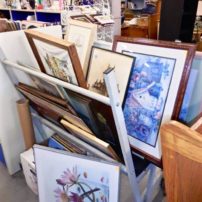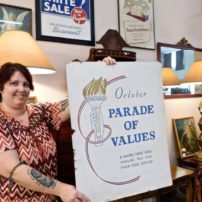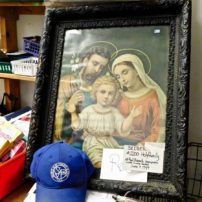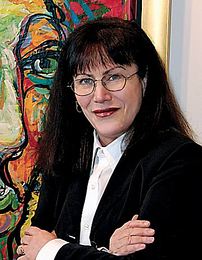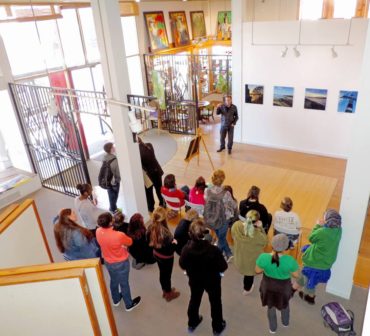 Disposing of art is a sensitive subject. Having too much “stuff” can be quite a dilemma — but having too much art, unwanted art or art that doesn’t fit the décor is really a dilemma, because just the word “art” connotes a certain reverence.
Disposing of art is a sensitive subject. Having too much “stuff” can be quite a dilemma — but having too much art, unwanted art or art that doesn’t fit the décor is really a dilemma, because just the word “art” connotes a certain reverence.
The “Got Stuff” article in the last issue did not include “art.” I would surely be reprimanded if I put “art” in the same category with “stuff” but let’s be realistic. How could I not when the market is flooded with everything, even art?
It doesn’t take a rocket scientist to figure out that this is a social dilemma, involving aging baby boomers and millennium minimalists. Add that to current living trends with more windows, fewer interior dividing walls, smaller apartments and more at-home jobs taking space — and where does the art go?
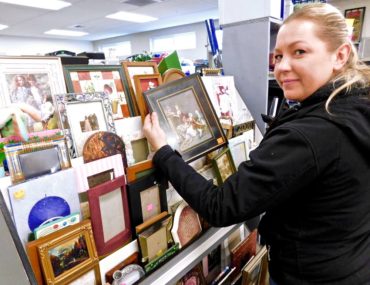 As the owner of an art gallery for 25 years, I have seen and heard a lot, from homeless persons hoping an art find will merit riches to starting-out-artists who put unrealistic values on their vast creations that accumulate without sales.
As the owner of an art gallery for 25 years, I have seen and heard a lot, from homeless persons hoping an art find will merit riches to starting-out-artists who put unrealistic values on their vast creations that accumulate without sales.
Then there is inherited art. I have received many calls on that subject from folks wanting to sell art that has been passed down to them. Often, this becomes a guilt factor. Especially if, let’s say, it was art painted by Aunt Sarah and found in great-grandfather’s storage locker.
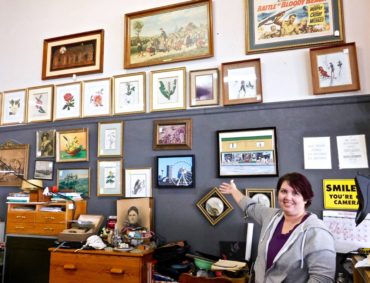 If other members of the family don’t want the art either, here’s an idea. What were Aunt Sarah’s hobbies, goals or dedications? Or what is the subject of the painting? Find a beneficial auction related to that. Then donate the art in Aunt Sarah’s name.
If other members of the family don’t want the art either, here’s an idea. What were Aunt Sarah’s hobbies, goals or dedications? Or what is the subject of the painting? Find a beneficial auction related to that. Then donate the art in Aunt Sarah’s name.
What about inheriting an entire collection of art? And art categories could range from framed soup labels to rolled-up travel posters. We may emotionally overvalue “art” maybe just because it’s referred to as art.
It may not be politically correct to call art “stuff” but tell that to thrift shops, where art is as plentiful as bees in a sunflower field and art looms in every category imaginable. There’s decorative art, prints, tapestries, kids’ creations, investment art — and this doesn’t even include three-dimensional pieces.
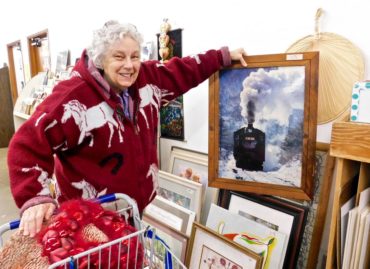 I began hitting local thrift shops and finding even more than I could imagine. From framed plastic pixie dancers to forest scenes on saws.
I began hitting local thrift shops and finding even more than I could imagine. From framed plastic pixie dancers to forest scenes on saws.
First stop was St. Vincent de Paul Thrift Shop in Bremerton that has been in operation since the late ’30s. Store manager Roger English, who has worked there for over 30 years, told me they get everything constantly, much of it being religious art and prints. The most a painting has sold for was $200.
While there, I ran into well-known artist Gwen Atwood, who shared a fun St. Vincent de Paul story. One day while looking through the stacks of art, she came across four original storyboards with sketches of the Bart Simpson TV characters.
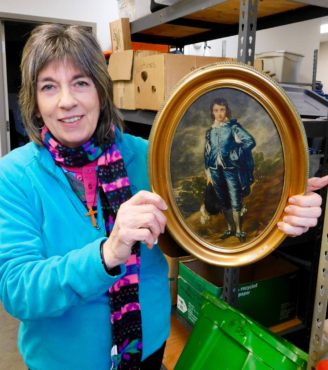 She bought them and came to find out they were the original drawings by the creator of the Simpson characters, Matt Groening. Atwood donated three of the storyboards to The Evergreen State College, which Groening attended.
She bought them and came to find out they were the original drawings by the creator of the Simpson characters, Matt Groening. Atwood donated three of the storyboards to The Evergreen State College, which Groening attended.
Where St. Vincent de Paul and Goodwill have national affiliations and online auctions, Faith in Action in Belfair is an independent nonprofit thrift shop whose proceeds stay for building operations and community assistance for area seniors. I noticed it receives donations of larger and more significant paintings, along with the usual knickknack-like framed prints, most of little value lest for the frames.
I noticed a large, orange painting hanging on the wall. Closer look indicated it was a Lee Reynolds mid-century modern original. Pricing director Marlene Leyva told me that Faith in Action also gets tons of art constantly. Sometimes the entire contents of households are donated, including the wall art.
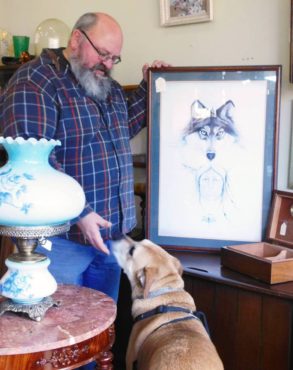 One day while there, I witnessed a fellow buying a large, framed watercolor original, pure mid-century modern. It was gorgeous and I figured it was worth quite a bit. It was half price day and $65 was a steal. Leyva said it was from a donated estate, and the same gentleman bought a mid-century sofa sectional the next week.
One day while there, I witnessed a fellow buying a large, framed watercolor original, pure mid-century modern. It was gorgeous and I figured it was worth quite a bit. It was half price day and $65 was a steal. Leyva said it was from a donated estate, and the same gentleman bought a mid-century sofa sectional the next week.
Antique malls present another avenue for art, and that being vintage and antique pieces. Most are being sold by consignors, and many consignors resell full time.
I went to Susanna’s Antiques on Callow Avenue in Bremerton and discovered the walls covered. Owner Susie White said that much of the art has ship or military theme, but the shop also offers everything. When I was there, a large collection of vintage posters had just come in.
Donna Kasemeier with Olde Central Antique Mall in Port Orchard showed me around. Because it is a corner building with spanning windows on two sides, there is less wall space for art — and much art cannot tolerate direct light.
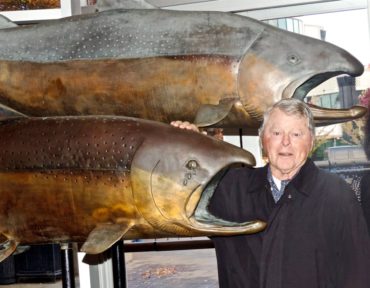 She told me about a lithograph by Walton Butts that was recently brought into the mall and quickly sold for $300. Prior to that, it had been picked up in a local thrift shop for $10.
She told me about a lithograph by Walton Butts that was recently brought into the mall and quickly sold for $300. Prior to that, it had been picked up in a local thrift shop for $10.
New 2 You Variety Mall in Port Orchard is another place where art goes. While there, I ran into a friend who has been in the vintage resale business for a long time. He agreed that there is a lot of art on the secondary market and selling best are mid-century modern, related knickknacks and speculative investment pieces.
He also pointed out that folks are buying thrift store art for the frames, especially from the ’80s when the trend was for prints framed with big, bold, expensive materials.
On the subject of “where does art go,” antique malls, thrift shops, art galleries, public storage, family relatives and landfills cover a whole lot of that. There is an art avenue not yet mentioned, a direction so complicated that I can’t continue from here.
The subject is the artist and what happens to the artist’s art. I interviewed numerous artists. When asked what they have planned for their art in the future — where will their art go — most shrugged.




